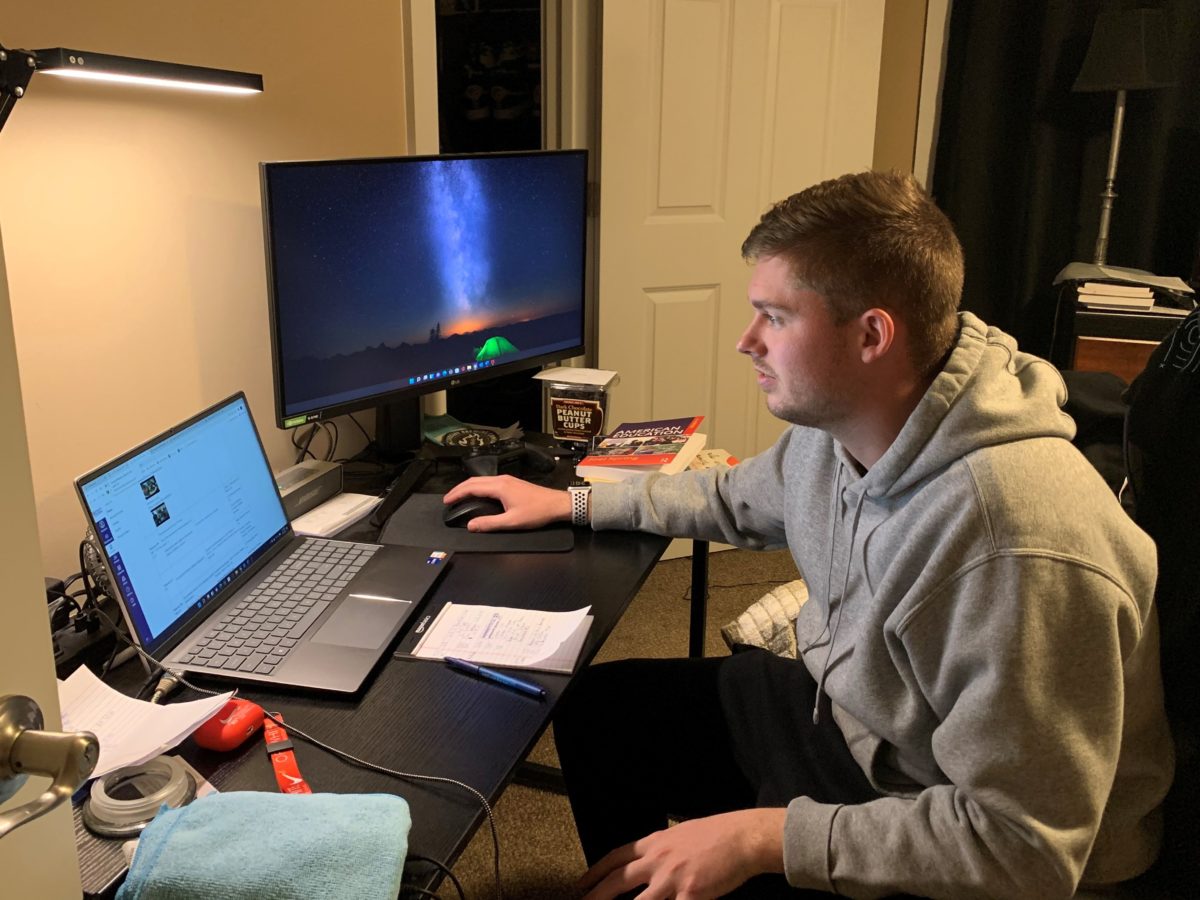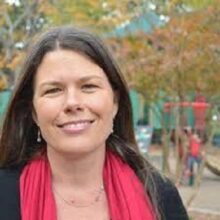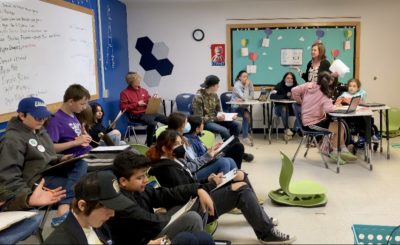
Back in 2015, new to the job at EdNC, I was visiting Hoke County Schools, and I learned a new word. Teacherage. It means housing provided for a teacher by a school or district.
Since then, EdNC has been studying different initiatives across the state to help teachers access affordable housing.
Access to housing makes a difference for teachers, like Canaan Frisby
Julie Pittman, special advisor to the state superintendent for teacher engagement, says, “We know that essential educator housing is important for teachers for recruitment and retention.”
Meet Canaan Frisby, a teacher at Johnson Elementary in Buncombe County Schools, who lives in the Williams-Baldwin Teacher Campus with his brother — also a teacher. They share the $950 in rent.
The campus includes 24 2-bedroom, 2-bath units. The units are 1,100 square feet and come with a fully-equipped kitchen and two parking spaces. This project is a partnership between Buncombe County Schools, Asheville City Schools, Eblen Charities’ Center for Social Enterprise, Buncombe County, and the SECU Foundation.
“Housing is such a huge component, such a costly component for our employees to live here,” said Superintendent of Buncombe County Schools Tony Baldwin. The teacher housing is “a wonderful resource for us to have, especially bringing that quality young professional into our school systems.”
What we heard from teachers
From May 23-27, 2022, EdNC conducted an online survey of K-12 teachers in North Carolina to better understand their housing situation and their thoughts on affordable housing. Roughly 1,000 teachers responded to the survey, with some drop-off throughout the survey. Here’s a summary of what they said about where they live:
- Type of housing (1,015 responses): 69% live in a house, 20% live in an apartment, 6% live in a townhouse, 2% live in a condo, and 3% selected “other.”
- Who they live with (1,003 responses): 44% live with a spouse or significant other, 31% live with family, 18% live alone, 5% live with roommates, and 2% selected “other.”
- Rent vs. own (996 responses): 43% own their house/apartment/condo/townhouse, 36% rent, 16% live in places owned by their family, and 6% selected “other.”
- How long it takes them to get to school on a typical day (965 responses): 45% 11-25 minutes, 23% 10 minutes or less, 23% 26-40 minutes, 8% 41-60 minutes, 1% over one hour.
We then asked teachers a series of questions about affordable housing. Note that 30% is widely considered to be the standard rent-to-income ratio, and 48% of respondents said they spend 35% or more of their monthly salary on rent.
The survey also collected comments from both teachers and other education-related staff. Here is a collection of some of those comments.
“Housing is one of the two most difficult hurdles for us to overcome as a school system. … Small homes and cabins are going up everywhere, but not for long term housing. … I recognize we are not alone in this dilemma. In my opinion, rural tourism based communities are especially burdened because of sparse housing options.”
Mark Sale, Superintendent of Swain County Schools
“As a principal, I have had interested candidates to Wake County tell me that they cannot afford to move here due to the cost of living compared to other areas of the state. That tells me that the salary raises are not keeping up with housing costs by location.”
Wake County principal
“I’ve taught in urban, suburban, and (most recently) rural districts during my teaching career. Housing in my rural district seems to be much, much harder than any urban or suburban district that I’ve taught in or that my teacher friends have taught in.”
K-12 teacher
“Young teachers today are paying more for rent near my school than I am paying for my mortgage on a 3,000 plus square foot 2 story brick house! Housing is very expensive and not affordable for young teachers just starting out. Most teachers work two jobs.”
K-12 teacher
“Housing is the biggest issue I see in Macon county. There are many families who have no housing available at all and are living in homeless shelters. I would move into another apartment/house, but there is very little available, and I can’t afford what’s available on my teaching salary.”
Macon County teacher
DPI’s Promising Practices
Earlier this year, the Department of Public Instruction launched a promising practices initiative, including an online dashboard spotlighting schools and districts across North Carolina.
One of the promising practices highlighted on the dashboard is affordable housing initiatives for teachers. Click on the links to access DPI’s infographics to learn more.
The role of SECU Foundation
Since 2007, SECU Foundation has worked with education leaders across North Carolina to support affordable workforce housing for public school teachers. There are five completed teacher housing projects supported by SECU Foundation with 0% financing for construction and permanent mortgage loans with 15 year terms: Hertford County, Dare County (Kill Devil Hills & Buxton), Hoke County, and Buncombe County. A sixth project in Bertie County will begin construction this year.
For districts interested in providing teacher housing, an early step, said Scott Southern at the Foundation, is the identification and acquisition of land, typically conveyed by the county or the district for the project.
The Foundation has identified these key elements school systems and communities should consider when planning workforce housing:
- Assemble a planning committee with representatives from the school system, local government, and other community leaders to ensure broad-based support of the project;
- Survey current teachers and recruits to assess the importance of affordable quality housing when discerning whether to remain in a community;
- Identify additional amenities expected by this workforce such as affordable utilities, recreation/dining/entertainment venues, and broadband access;
- Include an experienced housing partner to assist with the development, management, and marketing of the property;
- Consider expanding access to other employee groups such as first-responders; and
- Gather collaborative funding including grants, loans, and government resources to support an affordable rent structure.
Southern said to keep in mind increased construction costs and delays in the supply chain continue to impact the affordability of these projects requiring additional local investment to minimize the amount of debt.
This letter, project budget planner, and income and expense worksheet provide additional information for districts and communities interested in teacher and workforce housing. Information on how to contact the Foundation is included in the letter.


